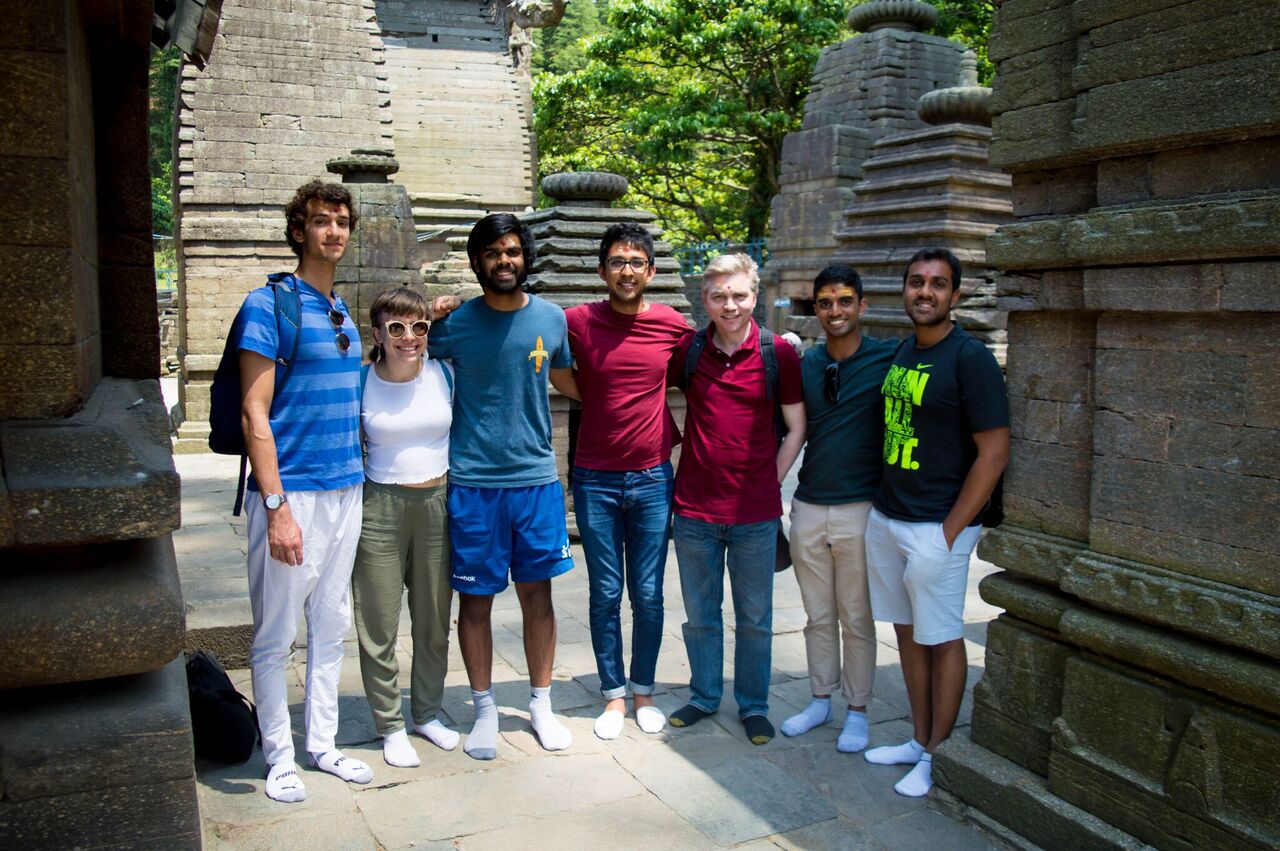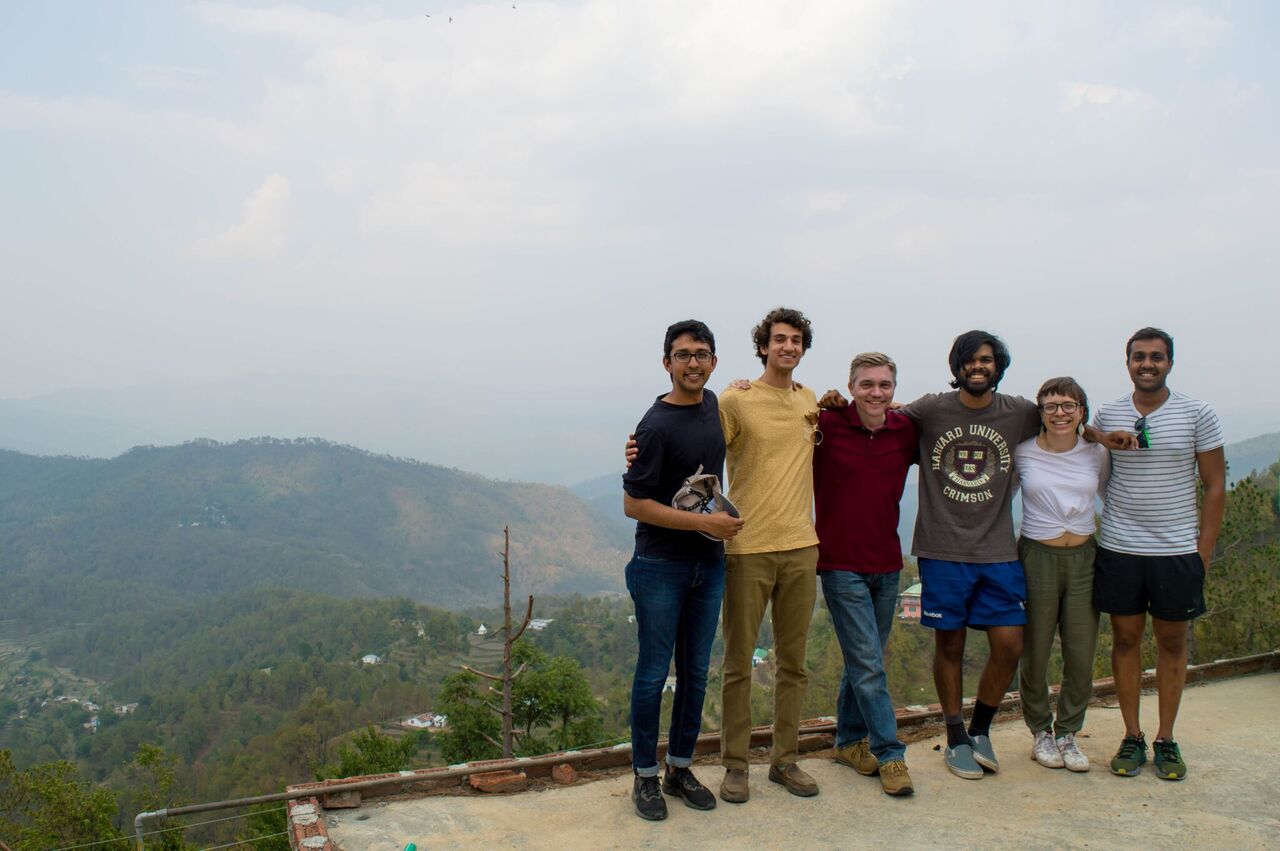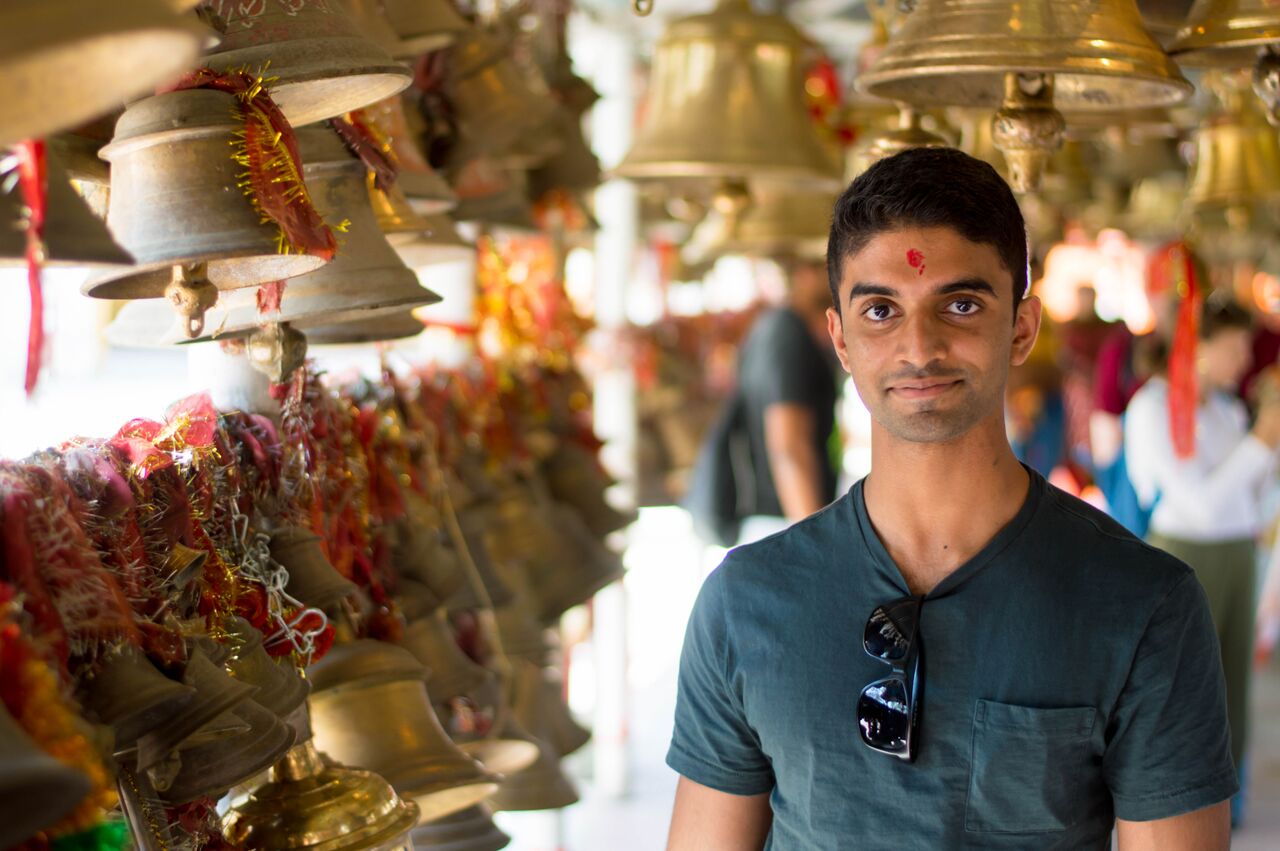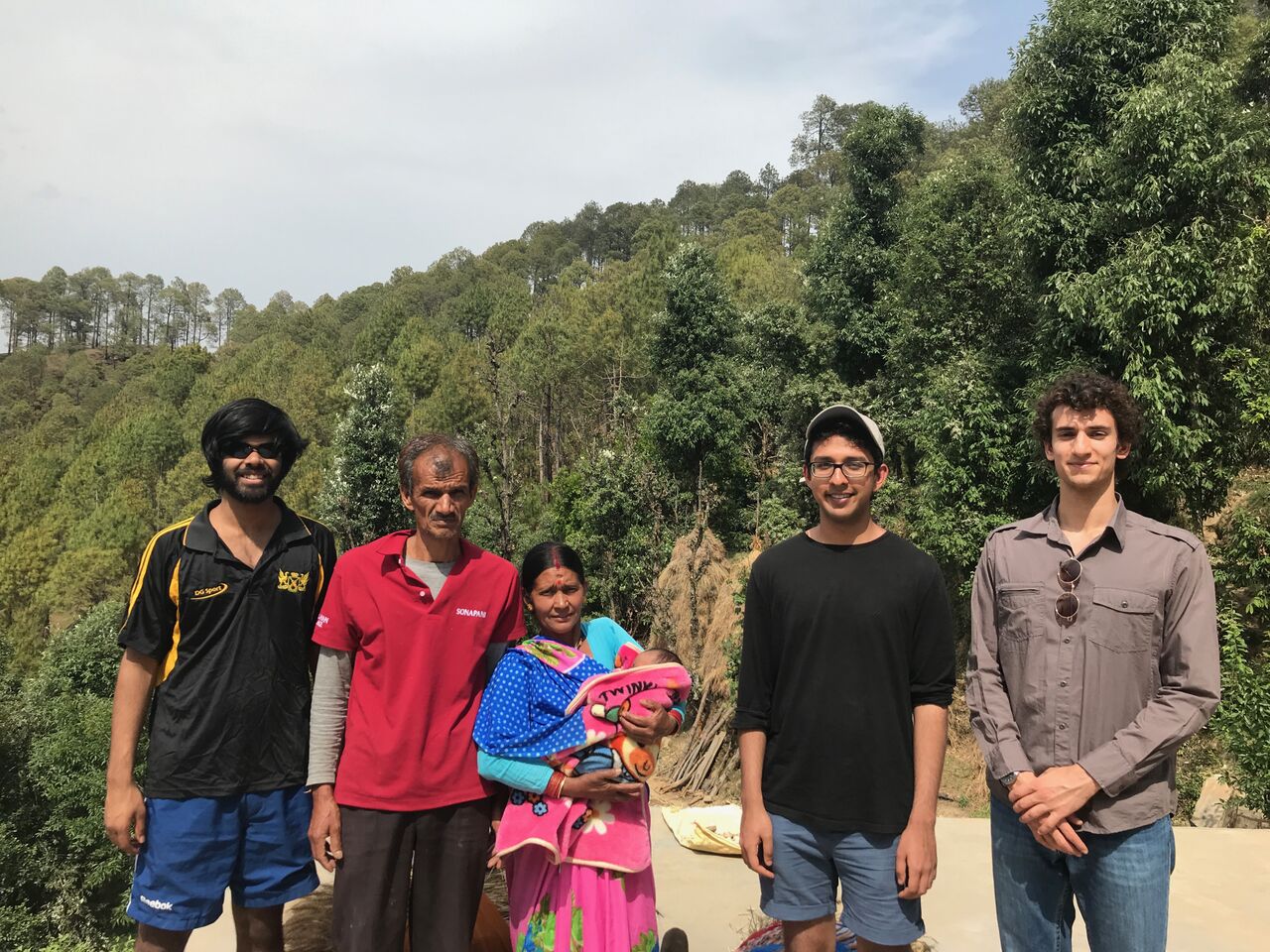
Richard Delacy (third from right) teaches Hindi and Urdu at Harvard. He recently took students to Uttarakhand for a 10-day immersive language experience. .
Richard Delacy, who hails from Australia, took his first trip to the Subcontinent as a teenager during an exchange year in Sri Lanka. That experience piqued his interest in the region, eventually leading to a lifelong engagement with South Asian languages and culture and over 40 trips to the region. Richard is a Preceptor of Hindi (one of the two official languages of India, and 3rd most spoken in the world) and Urdu (spoken by more than 70 million people as the official state language of Pakistan) in Harvard’s Department of South Asian Studies. We spoke with Richard about his language journey and his role at Harvard.
Mittal Institute: Richard, I understand a Sri Lankan study abroad experience at 17 paved the way for your future scholarly career. Can you share with us about what led you to first visit South Asia, and what captivated you about language study?
Richard Delacy: I was fortunate to spend a year in Kandy in Sri Lanka at the age of 17 as an exchange student, where I attended Trinity College, Kandy. This experience piqued my interest in South Asia, its languages and cultures, and inspired my life-long journey to learn more about this diverse and complex geographical region. Unfortunately I did not come away with a great understanding of Sinhalese or Tamil, on account of not participating in the regular curriculum and thanks to the prevalence of English. This was a source of regret for me.
Mittal Institute: Why Hindi and Urdu – what made you focus on these languages?
Richard Delacy: Having returned from Sri Lanka, when I began my undergraduate degree I wanted to make up for the lost opportunity to learn a South Asian language. The South Asian languages offered at my university in Melbourne were limited, but fortunately they offered Hindi, which I was able to study formally for three years as a part of my B.A. While an undergraduate, I was also awarded an Australian Government Scholarship to spend a year in India to further my language education. I spent this year studying at the Central Hindi Directorate in New Delhi. It quickly became apparent that my grasp of what we understand to be Hindi would remain inadequate without a knowledge of the Nastaliq script and of the influences of languages such as Sanskrit, Persian and Arabic on various registers, in particular higher literary registers, from the pre-colonial period onwards. While I did study Sanskrit as a part of my Ph.D., and integrated the Nastaliq script, I am still limited by a lack of knowledge of Indo-Persian.
Mittal Institute: How did you go about learning the languages, as a non-native speaker? What was this journey like, and do you think you brought a unique perspective as a non-native?
Richard Delacy: I studied Hindi formally for two years before spending a year in New Delhi and approximately three months in the foothills of the Himalayas in what was then the state of Uttar Pradesh and is now the state of Uttarakhand. My three months in a small town in the mountains was crucial to becoming more comfortable expressing myself in Hindi-Urdu. It was also this time when I became acutely aware of how varied the spoken forms of Hindi-Urdu are, throughout the length and breadth of north India. My time in the region of Kumaon, in particular, underscored just how diverse the different registers are. It is for this reason that formal language programs outside of India can only hope to introduce students to the modern, standard, literary form of Hindi-Urdu.
I also began to read modern literature at this point, which further demonstrated how various authors deploy different registers, styles, affective strategies, how these change over time, and how vast is the project of coming to terms with the rich literary traditions of Hindi-Urdu, stretching back several centuries. It quickly became apparent that this journey could last several lifetimes. As a non-native learner of Hindi-Urdu, I think that the thing I have benefited most from is the incredible generosity of people in South Asia in helping me to further my knowledge of various registers of Hindi-Urdu, both spoken and written. Being a non-native learner, I have also been fortunate to have possessed an acute sense of my own limitations, and the ways in which we are prone to extrapolate out from our own experiences to make more universal claims about language, culture, and community in the context of a phenomenon that forever exceeds our grasp. This has helped to remind me to continue to learn, in particular from my students, who come from an increasingly amazing variety of backgrounds.
Being a non-native learner, I have been fortunate to have possessed an acute sense of my own limitations, and the ways in which we are prone to extrapolate out from our own experiences to make more universal claims about language, culture, and community … This has helped to remind me to continue to learn, in particular from my students, who from from an increasingly amazing variety of backgrounds.
Mittal Institute: You have spent a lot of time in-country, teaching and studying. Can you share with us some of the work or teaching you have done in South Asia?
Richard Delacy: I have visited South Asia approximately 40 times, and have on occasion taken students from various universities for brief, in-country experiences. Recently, I took a group of six students from the College at the end of an academic year to the mountains of Uttarakhand, for a 10-day intensive, immersive language experience. It was a remarkable time for all of us, and the students got to experience life outside of a large metropolitan center. We spent time in a small village called Sonapani, near the town of Mukteshwar and between Kathgodam and Almora in Uttarakhand. We read for an hour each morning, before undertaking various activities, such as walking in the forest to various places, visiting historically and religiously important sites, such as a famous temple complex in Jageshwar and temples outside the city of Almora. We also had the good fortune to visit with some local residents and have a meal with them. It was wonderful for the students to have to come to terms with registers that are quite distinct from Modern Standard Hindi-Urdu.



Mittal Institute: Can you tell us a bit about the classes that you teach at Harvard? What levels of language study do you teach – and do you primarily focus on concentrators, or do you also have beginning language learners in your classes?
Richard Delacy: I teach Hindi-Urdu at all levels from the elementary level to the advanced level, as well as help graduate students occasionally if they need to continue to read in a particularly specialized literary form. While my academic focus is the Hindi novel in the twentieth century, I enjoy learning earlier forms of Hindi-Urdu with students who are both interested in, and need these particular forms for their graduate work. We get a diverse group of students registering for Hindi-Urdu at the beginning level, from those who wish to undertake more advanced study of South Asia to those who are looking for the challenge of learning a new language. Students are often amazed at how easy it is to learn Hindi-Urdu, in particular the Devanagari and Nastaliq scripts, which can seem intimidating at first, but which are incredibly relatable and conceptually straightforward.
This article is the first in a new series on South Asian languages at Harvard. Follow this series #SouthAsia@Harvard on Mittal’s Instagram and Twitter accounts.
